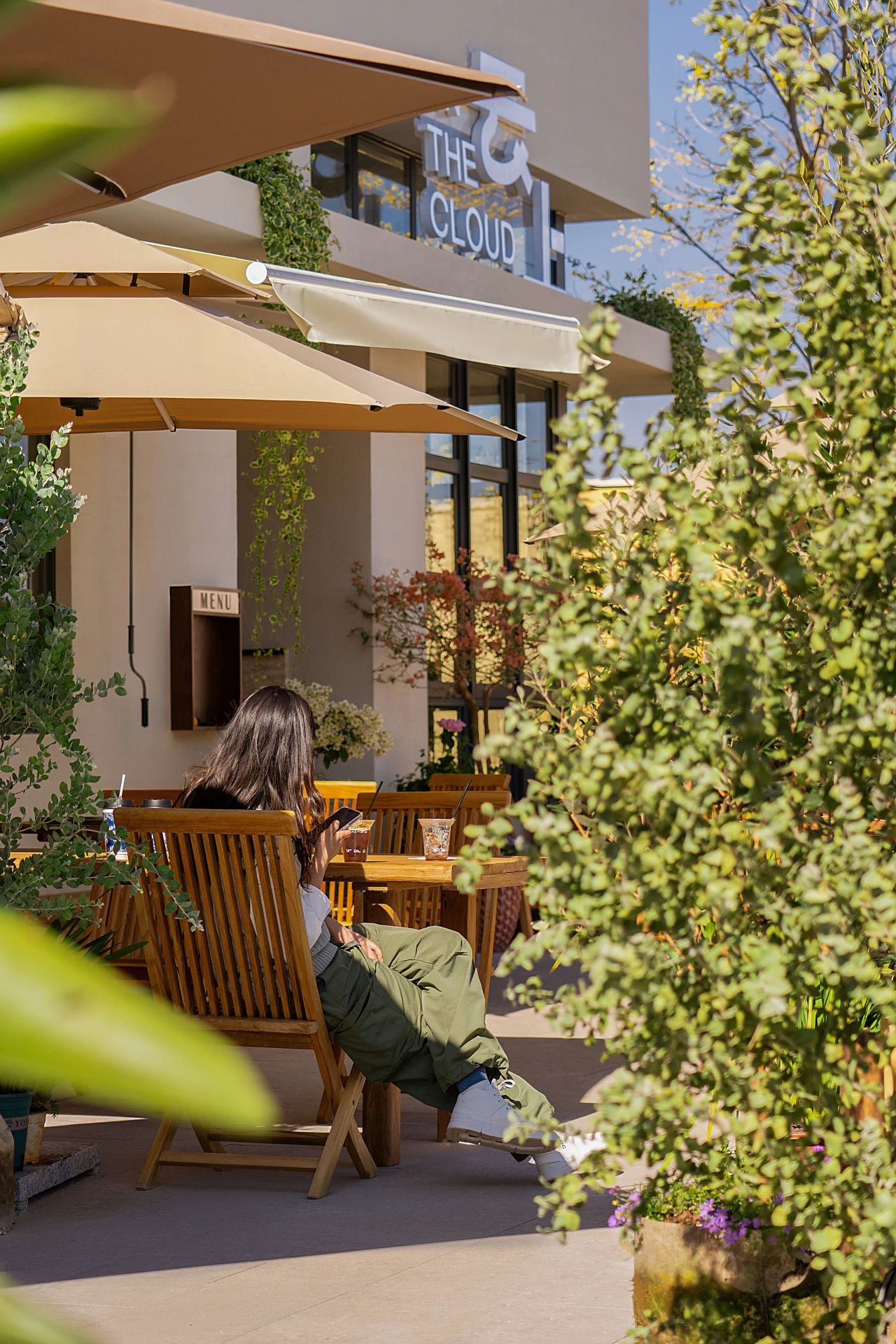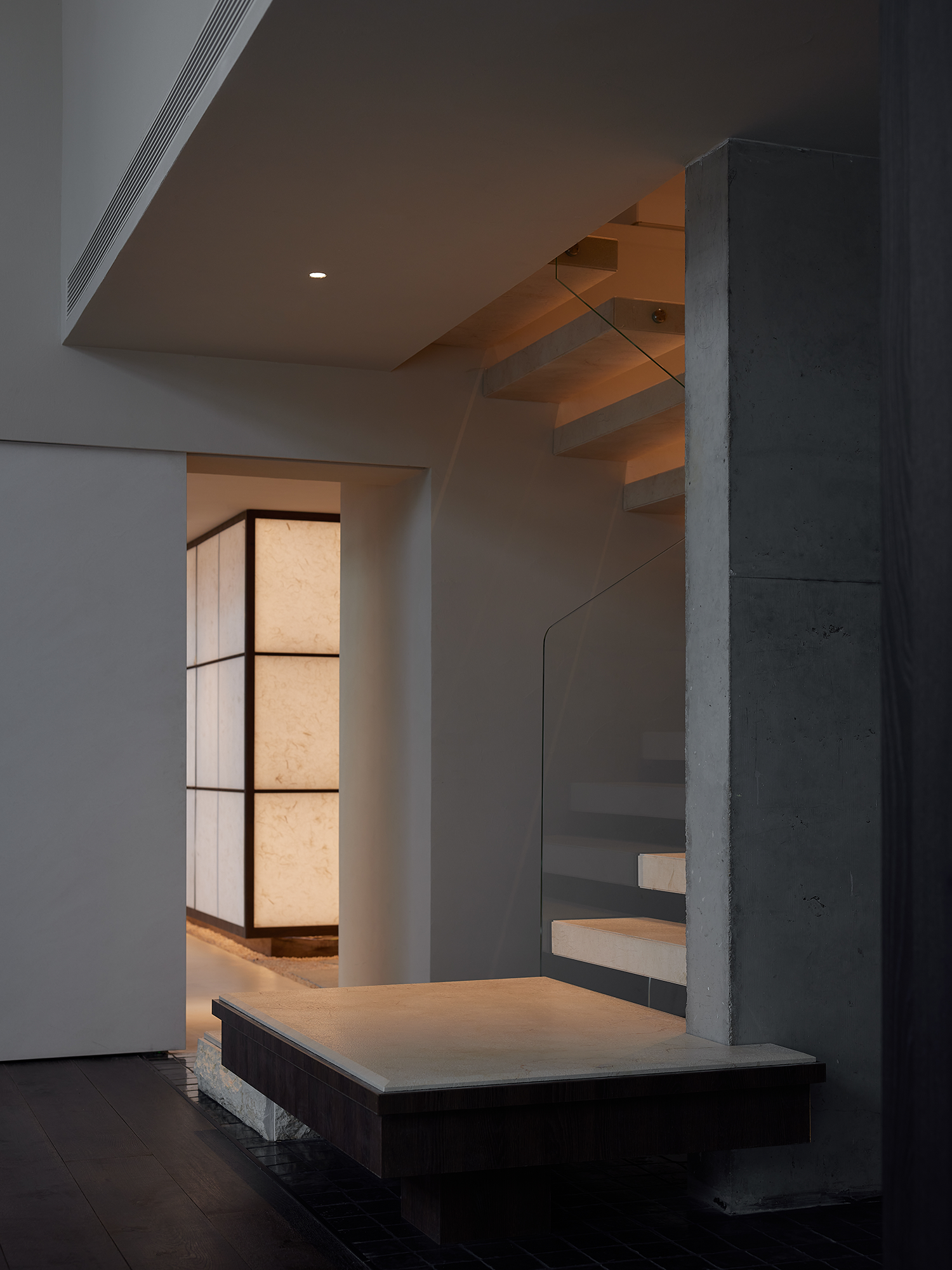DHUB. Barcelona Design Center MBM Arquitectes
2013-06-05 01:00
© Iñigo Bujedo Aguirre
c I igo Bujedo Aguirre


架构师提供的文本描述。这座建筑由两个部分组成:一个是地下部分(利用拉斯格拉里亚斯广场城市化引起的水平变化),另一个部分出现在14.50m层以上。后者是一条与阿维拉街相同宽度的平行切成的部分,用以指示街道与广场之间的关系,而不遮挡大型中央公园的景观。地下屋顶有一个公共空间的完成和使用,因此与未来的拉斯格洛里亚斯广场项目有关。绿色地毯是关键部件之一,并与确保可持续性和易于维护的自然要素一起实现。明亮的图形和珀戈拉补充了城市广场位于建筑物的另一边,旁边的梅里迪亚纳大道。酒吧和餐厅设置在6.98米的高度,作为公共空间的吸引力。湖泊是一个构成基础,联系不同的层次。
Text description provided by the architects. The building consists of two parts: one underground (using the level change caused by the urbanization of the plaza de las Glorias), and another that emerges above the level +14.50m. The latter is a parallelepiped cut in sections with the same width as Avila street, so as to work as an indicator of the relationship between the street and the plaza without closing off the views of the large central park. The underground roof has the finishes and use of a public space, thus related with the future project of the plaza de las Glorias. The green carpet is one of the key components and has been achieved with natural elements that ensure sustainability and ease of maintenance. The bright graphics and the pergola complement the urban plaza situated on the other side of the building, next to Meridiana Avenue. The bar and restaurant is set at the +6.98m level and functions as an attraction to the public space. The lake is a compositional base that relates the different levels.
© Iñigo Bujedo Aguirre
c I igo Bujedo Aguirre


最密集的活动位于两层楼和一个阁楼,如主展厅、图书馆、研究和教学、如商店、自助餐厅等。自然采光和与外部的关系,虽然是半地下室,但是与坑产生的层次的差异,加强了反射池,一种大的凹陷庭院。这种照明由公共空间中出现的六个天窗加强,可用作中心内容和活动的展示。底层是基础层(-1.50m)的技术层,包含各种储藏室和建筑服务。
The most dense activities are located on two floors and a mezzanine, such as the main exhibition hall, library, research and teaching, great turnout services like the shop, cafeteria, etc. Natural lighting and the relationship with the exterior, despite being a semi-basement, is achieved with the pit produced by the difference in levels, reinforced with the reflecting pool, a kind of large sunken courtyard. This lighting is reinforced with six skylights that emerge in the public space and can be used as showcases for the content and activities of the center. The lower floor is a technical level at foundation level (-1.50m) which contains the various storage rooms and building services.
© Iñigo Bujedo Aguirre
c I igo Bujedo Aguirre


根据规划,楼宇占用最少的楼面面积,以免减少供公众使用的空间,以及由于拆卸的变迁及电车路径的改变,不容许有更多空间。建筑作为一个悬臂延伸到广场,从而允许可预见的建筑面积,同时成为建筑城市流线之上的标志。入口是通过一个单一的大厅,双通道:在7楼,从阿维拉街,在14.5米,从广场。这座大厅是一种街道或公共广场-或半公共广场-与拉斯格洛里亚斯广场、波布连努广场、地铁站和可能的交换器有关。地下室的所有建筑服务都可以从这个半公共广场进入,所有上层也可以通过楼梯、机械楼梯和电梯系统进入,形成一个连续的单元,一直到会议室。建筑物外部只使用两种材料,金属板(预先风化的石英-锌、铝和铸铁)和玻璃,因此它们一起具有工业外观。
According to the planning, the building occupies minimum floor area so as not to reduce the space for public use and because the vicissitudes of demolition and change of tram paths do not allow for more space. The building is prolonged as a cantilever to the plaza, and thus allows for the foreseen buildable area, at the same time becoming a sign of architectural urbanity over the circulation lines. The entrance is through a single hall with double access: at level +7m, from Avila street, and at level +14.5m, from the plaza. This hall is a kind of street or public plaza – or semi public – which relates the plaza de las Glorias, the Poblenou, the metro station and the possible exchanger. All the building services in the basement are accessible from this semi-public plaza, and all the upper floors are also accessible through a system of stairs, mechanical stairs and elevators, forming a continuous unit up to the conference room. Only two materials were used in the exterior of the building, metal plates (pre-weathered QUARTZ-ZINC zinc, aluminum and cast iron), and glass, so that together, they have an industrial look.
© Iñigo Bujedo Aguirre
c I igo Bujedo Aguirre


公众进入大楼的通道是位于阿维拉街延伸处的大厅。该大厅可从位于不同楼层的两个点进入:从拉斯格洛里亚斯广场(14,50层)和阿维拉街尽头的绿地(6,98层)进入。这个大厅通过自助餐厅与外面的露台相连。我们还预计,在情况允许的情况下,与德荣耀地铁站的大厅联系。有两个服务入口。第一座位于巴达霍兹街。这个入口是为了装卸说明材料。因此,我们提供了一个很大的地方,可供停泊两辆货车和一个卸货码头。第二个入口位于广场,在大楼和阿拉瓦街之间。我们预计餐厅人员、餐厅和公共图书馆将使用这一通道,并作为这些地区的服务入口。这座大楼的周边都布置了所需的紧急出口。
Public access to the building is through the lobby located on the extension of Avila street. This lobby is accessed from two points located at different levels: from the plaza de las Glorias (level 14,50) and from the green area at the end of Avila street (level 6,98). This lobby is linked to the exterior terrace through the cafeteria. We also foresee, when circumstances permit, to communicate the lobby with the de Glories metro station. There are two service entrances. The first is located on Badajoz street. This entrance is intended for loading and unloading expository material. For this reason, we have provided a large space suitable for parking two trucks and a loading dock. The second entrance is located in the plaza, between the building and Alava street. We expect that this access will be used by the cafeteria personnel, restaurant, and public library, and also serves as service entrance for these areas. The building has the emergency exits required laid out throughout its perimeter.
© Iñigo Bujedo Aguirre
c I igo Bujedo Aguirre


整个项目涉及高度的环境质量、可持续性和能源效率。最重要的特点是:被动可持续性(70%的建筑体积被掩埋,立面和窗户的材料和结构,储存和废物处理,预工程系统,遮阳和隔热等。在“加泰罗尼亚总”和“欧盟生态标签”的独特环境质量保证标准范围内,卫生(再利用雨水的分离系统等),管道(最低消耗和流量调节等),空调(与Disticlima联网,用于冷热水供应,从制冷厂回收热量,天然气锅炉,室外条件允许时免费冷却,潜热回收对排风、可变空调器等,电力(对耗电,探测器,光伏板等直接使用太阳能等),中央管理的所有设施。卡塔拉能源研究所(ICAEN)给建筑的能源评级A,它值得自己的一章,因为它的组成,城市和功能的重要性。我们应该表明它参与了一个高质量的公共空间的设计,有可能打开一个使地下室空间舒适的立面,通过在附近提供一个显示设计某些方面的空间来振兴整个行业。
The entire project involves a high degree of environmental quality, sustainability and energy efficiency. The most important features are: passive sustainability (70% of the built volume is buried, materials and structure of the facades and windows, storage and waste treatment, pre-engineered systems, shading and insulation, etc. within the criteria of distinctive Environmental Quality Assurance of the Generalitat de Catalunya and the EU Ecolabel), sanitation (separation system to reuse rainwater, etc), plumbing (minimum consumption and flow regulation, etc), air conditioning (network connection to Disticlima for hot and cold water supply, heat recovery from refrigeration plants, natural gas boilers, free cooling when outdoor conditions permit, latent heat recovery on the exhaust air, variable air conditioners, etc), electricity (on consumption, detectors, photovoltaic panels for direct use of solar energy, etc), central management of all facilities. The Institut Catala d’Energia (ICAEN) has given the building the energy rating A. It deserves its own chapter due to its compositional, urban and functional importance. We should indicate its participation in the design of a quality public space, with the possibility of opening a facade that makes the basement space comfortable, the revitalization of the entire sector by offering a leisure area nearby with a space that shows some aspects of design.


















































Architects MBM Arquitectes
Location Barcelona, Barcelona, Spain
Category Office Buildings
Project Architects Martorell, Bohigas, Mackay, Capdevila, Gual
Area 29352.0 m2
Project Year 2013
Photography Iñigo Bujedo Aguirre
Manufacturers Loading...
























